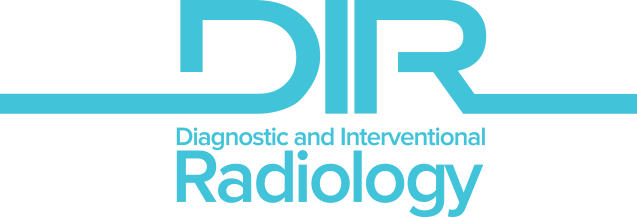ABSTRACT
PURPOSE
To evaluate the diagnostic contribution of diffusionweighted magnetic resonance imaging (MRI) using apparent diffusion coefficient (ADC) values to the characterization of hepatic masses and differentiation of benign and malignant lesions.
MATERIALS AND METHODS
The study included 30 patients that underwent upper abdominal MRI examinations because of hepatic masses that were found to be ≥1 cm in size with conventional sequences, and were additionally evaluated with diffusion-weighted MRI. Diffusion-weighted images and ADC maps in the axial plane were obtained using a 1.5 Tesla MRI device, single shot echo-planar spin echo sequences on 3 axes (x, y, z), and diffusion sensitive gradients with 2 different b values (b = 0 and b = 1000 s/mm2). Mean ADC measurements were calculated among the 30 cases involving 41 hepatic masses.
RESULTS
Of the 41 hepatic masses, 24 were benign and 17 were malignant. Benign lesions included 6 cysts, 14 hemangiomas, 2 abscesses, and 2 hydatid cysts. Malignant masses included 8 metastases, 4 hepatocellular carcinomas, 4 cholangiocellular carcinomas, and 1 gall bladder adenocarcinoma. The highest ADC values were for cysts and hemangiomas. The mean ADC value of benign lesions was 2.57 ± 0.26 x 10-3mm2/s, whereas malignant lesions had a mean ADC value of 0.86 ± 0.11 × 10-3 mm2/s. The mean ADC value of benign lesions was significantly higher than that of malignant lesions (P < 0.01).
CONCLUSION
Diffusion-weighted MRI with quantitative ADC measurements can be useful in the differentiation of benign and malignant liver lesions.



